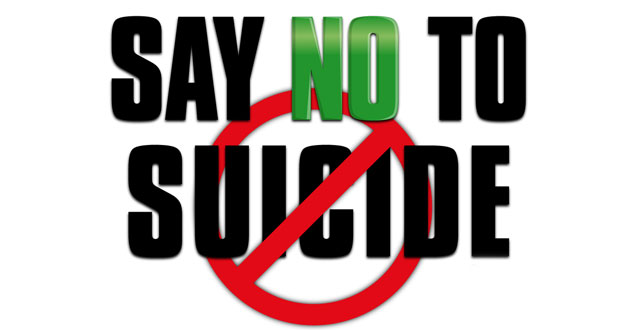
IN 1978, a study by a researcher named Richard Seiden found that 90% of people who tried to jump off San Francisco’s Golden Gate Bridge did not go on to die by suicide. From this one can infer that victims of suicides would also have been relieved had they survived, which means that there is always a possibility of being able to help those who display any kind of behaviour that may lead to suicide.
But such help can only be offered in a context of information dissemination and requisite training at various levels of society. And this context becomes so urgent given that, not only does Guyana have the fourth highest suicide rate in the world, with 26.4 suicides per 100,000 people (2006. All indications suggest it’s higher today) but also because of the possibility that not all suicides end up in the official stats.
Furthermore, research reveals that, for every person who commits suicide, 30 attempts fail; so there would translate into over 700 attempted suicides per 100,000 persons in Guyana. Additionally, there seems to be a certain predisposition to suicide within some families, (more than one member attempting suicide) and within certain locations, where suicide becomes an almost normative and/or copycat act.
With respect to information dissemination, those who dispense drugs – agricultural and pharmaceutical – should be mandated to always provide information about the dangers of ingestion or overdose, as the case may be, to each purchaser. Such information can then be disseminated to everyone in the home, which must eliminate easy access to all drugs and medications by securely locking them away. Only the most level headed and/or responsible person in the household should have access to keys or lock combinations.
Secondly, there should be an ongoing suicide prevention programme that is focused on educational and religious institutions, and medical care facilities. This would entail the provision of requisite training for health care professionals, religious leaders and educators.
Such training can be joint ventures between the public and private sectors, including non-governmental organizations; professional and business bodies; and sports, cultural and youth clubs.
Such training should include emphasize communication, lack of which has been identified as a significant driver of suicide. In fact, many of those suicides that involve teens in intimate relationships and teens getting pregnant are a result of lack of empathetic communication on the part of parents and legal guardians. Instead, scolding in anger, threats of dire consequences, use of force, guilting and scare-mongering seem to characterize communication in those situations.
Emphasis should also be placed on self-acceptance. Researchers at Northwestern University in the US found that self-acceptance could help people to be more realistic about who they are, and less willing to internalize negative and dysfunctional behaviours which drive suicide. Self-acceptance should go in tandem with self-forgiveness. As the late Maya Angelou suggested, “Forgive yourself for every failure…because if you’d known better you would have done better!”
Thirdly, there is need for ongoing focus on suicide and related issues such as alcoholism, domestic violence, relationships and teenage pregnancy in all schools. Students can engage in research and investigations, and express thoughts and feelings via writing (essays, poetry), art, drama, debates and focused events. Naturally, too, suicide, substance abuse, violence and teenage pregnancy should become part of the school curricula, especially at the secondary and tertiary levels; and, if possible, the provision should be made for at least one staff member with a requisite level of training in guidance and counselling (such a pilot programme was in place a few decades ago). Among other tasks, this individual should engage in regular contact with parents/homes and other service entities within the school catchment area. This would create a network of alertness and quick-response to situations that may point to suicidal behavior, and also provide assistance with related issues that drive suicide: domestic violence/abuse, teenage pregnancy and relationship issues, and alcoholism.
While suicide is both premeditated and impulsive, last-minute impulses often actualize from hopelessness, powerlessness, helplessness, loneliness, depression, fear and anger; whereas premeditation is driven by relationship and intimacy problems, teenage pregnancy, alcoholism, domestic abuse, and other forms of violence.
Thus those who are trained to man the anti-suicide campaign must be aware of the risk factors and warning signs. And they should take note of any behaviour out of the ordinary, language out of the usual, and change in attitudes, and immediately set the ball in motion by engaging in empathetic communication and making the next-step referral.
The long and short of it is that suicide is not a solution, and should not be an option. And given the frightening numbers cited above, suicide prevention should be everybody’s business, especially since suicide is inextricably linked with other social issues, such as alcoholism, relationship and intimacy problems, drugs and substance abuse, and domestic and other forms of violence.
Thus we commend and applaud the efforts and actions of the students and teachers of the Black Bush Polder, Essequibo and Berbice High schools, who have lifted the banner of suicide prevention for the rest of the nation to follow suit. We hope students and teachers from throughout the nation will join in this effort, and that the rest of society will become involved.
Similarly, we applaud the press statement put out by APNU, and we hope APNU will now join with government in developing measures to address this issue. In the final analysis, suicide transcends political gamesmanship, and our politicians must display the will to lead the suicide prevention campaign, which will also result in tackling the other related issues.
